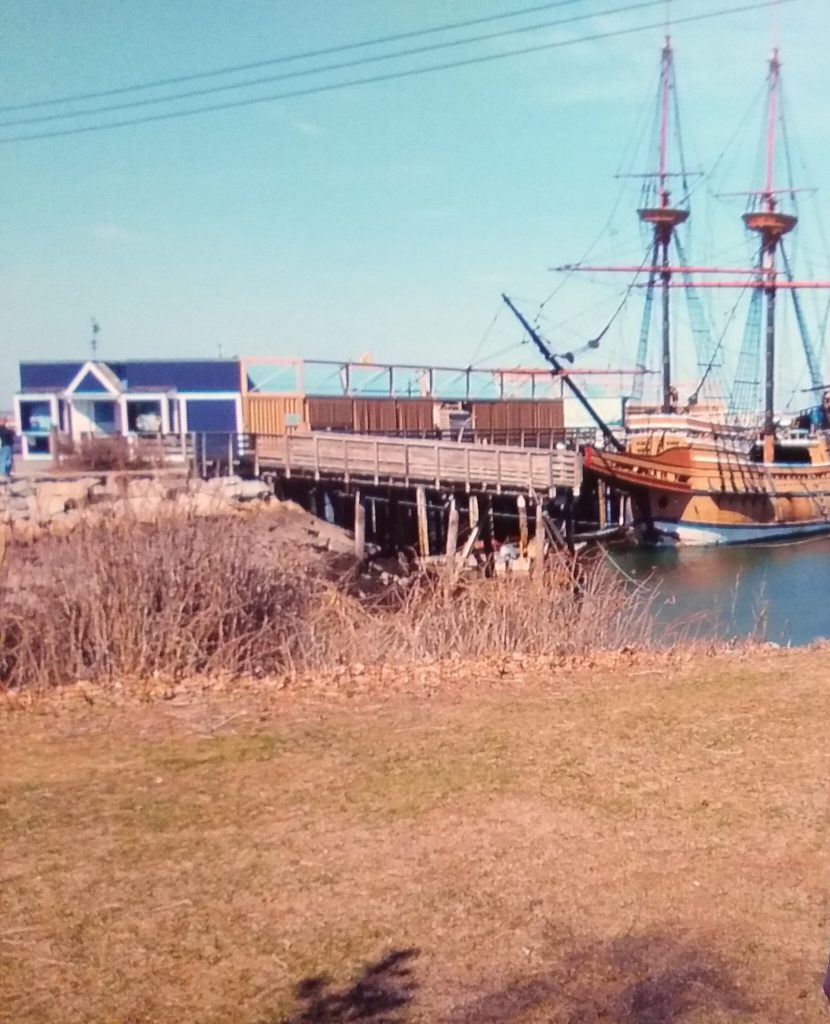
Travel Journal, 87
Several years ago, the college I was attending required that I spend 10 days in Boston for further education. After the long days of vigorous training, my wife flew out and tacked on a week-long, much-needed vacation.
Our goal?
See New England and especially the historical bits.
And what better place to start than Plymouth, Massachusetts? We found a nice little hotel nestled along the coast and began our journey through time. Though we absolutely adore places like Boston, the Cape, and all of Maine, the highlight of our trip had to be our time in historic Plymouth.
In my quest to find the goodness of America, should I not go back to the beginning? One of the most interesting and inspiring American pilgrimages that any American can take is the journey to Plymouth Plantation. In 1620, our ancestors which we now call pilgrims made their long voyage from the Old World to the New. Relics of that time still exist in a few locales.
We gazed down at the legendary Plymouth Rock, on which the pilgrims were thought to have first stepped. A recreation the Mayflower floats in the harbor. Pay the right price and you too can experience the wide, open ocean. Bust most of all, the original colony location, discovered long ago, is now the home of a unique “living history” museum. The colony buildings, fences, yards, and various structures have been rebuilt in near-perfect accuracy. Museum professionals and historians, as well as college students, dress up in period clothing and perform day-to-day living right in front of your eyes.
The story of the first Thanksgiving is beauty, tragedy, truth, and legend—all rolled into one amalgamation which we now celebrate each year. Records and writings of people like William Bradford, Governor of the colony, tell of setting aside several days of feasting to give thanks to God. On one such time of feasting, a group of Wampanoag natives showed up unannounced and spent a week sealing a treaty of peace between the two groups. Although, that peace would not last, it was certainly a time to be thankful. It is generally known that the Native Americans taught the pilgrims many life-saving skills. The colonists had been through terrible loss, burying nearly half of their own in the prior winter. And yet, they found a way to be thankful.
A rising tide of history denying, rewriting, and condemning has begun to rear its ugly head. Some groups of people don’t want to be associated with the ugly bits of American history. I certainly can’t condone bad behavior. But what has occurred in the past is done.
The history of our ancestors is not perfect. Slavery happened. Killing of Native people occurred. Death was everywhere. But to dig out the foundation is to rebuild upon the mud.
With all of the focus on the ugly history of America, it can be easy to forget that there was indeed a group of people who fled to this land seeking freedom. It’s easy to forget that they suffered beyond modern understanding. Their thanksgiving was not just a simple one-day meal and maybe some shopping later.
Their Thanksgiving was part of their life. They did not just decide to start giving thanks. They had to live it often. Because without gratitude, their living would seem hopeless and all the loss meaningless.
So now as modern-day Americans, we meet together to give thanks. And though a few other countries celebrate a day of thanksgiving, none compares to Thanksgiving in America. For we are a nation built on struggles and pain.
And yet we give thanks.
In this way, America is good.
anthony forrest
Keep up with the rest of the series:
Leave a Reply